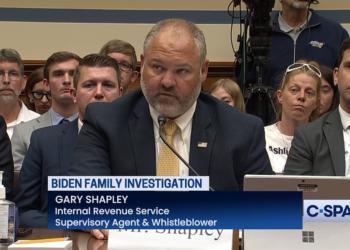Because we sadly could not clone a series of Doug Burgums to fill Donald Trump’s second cabinet, the president could only settle on granting him one department. Trump nominated and the Senate confirmed the former North Dakota governor to be interior secretary.
Luckily for the one-third of people priced out of home ownership, Burgum is partnering with Housing and Urban Development Secretary Scott Turner to sell off federal land, a move aimed at creating new affordable housing. It’s a long overdue win for YIMBY housing growth enthusiasts — advocates for increased housing development, often in response to restrictive zoning and planning policies.
“HUD will pinpoint where housing needs are most pressing and guide the process by working with state and local leaders who know their communities best,” the pair said about the new Joint Task Force on Federal Land for Housing.
“Interior will identify locations that can support homes while carefully considering environmental impact and land-use restrictions,” added Burgum, a Stanford Graduate School of Business alumnus and wealthy former software entrepreneur, and Turner. The HUD secretary is a one-time NFL defensive back who turned to politics and was a Republican state representative in Texas before a stint in Washington as executive director of the White House Opportunity and Revitalization Council during Trump’s first term.
“Working together, our agencies can take inventory of underused federal properties, transfer or lease them to states or localities to address housing needs, and support the infrastructure required to make development viable — all while ensuring affordability remains at the core of the mission,” Burgum and Turner said.
Trump campaigned on a pro-development platform long before Burgum withdrew from his short-lived 2024 Republican presidential primary bid. In March 2023, Trump proposed creating 10 federally chartered “freedom cities” on federal lands. Trump also, during a 2024 Bloomberg interview, correctly called zoning regulations a “killer,” pledging reform to bring housing prices down.
But Burgum began a housing revolution in person during his eight years as governor of North Dakota. As part of a statewide initiative to improve housing affordability, he established the Office of Community Development and Rural Prosperity. Burgum also pushed mixed-use zoning and form-based codes to encourage walkable neighborhoods.
“We built cities all over America that are designed for automobiles and not designed for people,” Burgum said during a meeting of the National Governors Association last year. “Our housing costs are high, in part because of the way that we’ve designed our cities.”
While residents of North Dakota, whose population boomed under Burgum to become the seventh fastest-growing state in the union, still have time before they see the fruits of his labor, Austin, Texas, provides some possible insight. Pro-growth housing policy in the capital of the nation’s second-most populous state has led to a staggering 22% reduction in rent.
The new Interior-HUD collaboration isn’t zoning reform, but in terms of the actual job of the federal government in promoting prosperity, it could be even better. While the federal government owns about a quarter of all U.S. land, in the West, it’s nearly half. In one fell swoop, the Trump administration can enrich citizens while quite literally shrinking the size and scope of the federal government.
Congressional Republicans on the Joint Economic Committee estimated in 2022 that building on the Western plots managed by the Bureau of Land Management, many of which are close to growing urban centers in Utah and Nevada, would fulfill 14% of the country’s current housing shortage.
Such efforts are long overdue. The magnitude of our housing supply crisis remains dire three years after the Federal Reserve began its post-COVID-19 monetary tightening. Home prices are up nearly 5% since last year. While the rental vacancy rate is reaching close to the prepandemic level of nearly 7%, the homeowner vacancy rate remains at 1.1%, close to the lowest level recorded by the Census Bureau in nearly seven decades.
YIMBY movements, such as those in Austin, have finally produced some progress, with housing units by population level increasing from the rock-bottom embarrassment of 2018 up to 2012 levels. But the nation still has a shortage of nearly 4 million housing units in demand, per an estimate by Up For Growth, a nonprofit group that advocates the sort of zoning reform and other policy changes to increase the housing supply.
Contrary to the online outrage from de-growthers on both the Left and Right, the HUD-Interior deal would not involve razing over national parks or building useless houses in the middle of nowhere. The JEC Republicans found that the aforementioned plots of BLM land comprise just 0.1% of all federal land.
TRUMP WANTS IMPEACHMENT OF JUDGE AFTER WHITE HOUSE SUGGESTED OTHERWISE
The HUD-Interior deal should be considered just the beginning of the Trump administration’s pro-growth policies. Congress can and should allow state and local governments to petition the Interior to sell off federal land, by passing the HOUSES Act proposed by Sen. Mike Lee (R-UT). And instead of overturning federal incentives for local zoning reform, as Turner has bragged about doing, we need the federal government to remind localities that spending from Uncle Sam is not a right, but a privilege. The feds need to threaten state and local funding unless governments allow more of the mixed-use and medium-density housing that Burgum has so eloquently touted.
But Burgum and Turner have made a momentous step in the right direction here. A generation of young people will come just a little closer to achieving that quintessentially American dream of home ownership.














